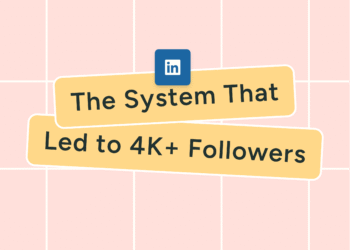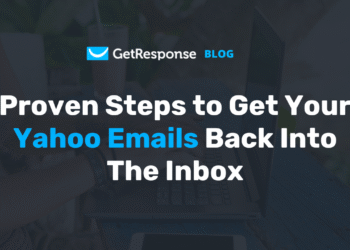Summary: Did you know that employee-shared posts generate 8x more engagement than branded content? Social advocacy leverages authentic employee voices to amplify your brand’s reach, build trust, and drive higher-quality leads on social media platforms like LinkedIn, Instagram, and X. This blog dives into what social advocacy is, why it’s a powerful marketing tool, and how to use best practices to maximize its impact through content sharing, advocate engagement, and strategic use of social advocacy tools.
Did you know that posts shared by employees generate 8x more engagement than the same content published by a brand account? Social advocacy isn’t just a buzzword, it’s one of the most effective ways to expand your brands reach, build trust, and convert prospects in today’s crowded digital space.
If, like many brands aiming to expand their social media presence and amplify their digital footprint, the concept of Social Media Advocacy may still be unfamiliar. Social Media Advocacy leverages the authentic voices of employees and brand advocates to increase reach, build trust, and generate higher-quality leads on platforms like LinkedIn, X, Instagram and Facebook. For those already familiar with Social Media Advocacy, this blog will guide you on how to maximize its impact by implementing best practices, optimizing content sharing, and engaging advocates effectively.
What is Social Advocacy?
Social advocacy is when employees or other key stakeholders such as volunteers or board members share company-approved content on their personal social channels.
Instead of relying solely on your brand-owned accounts, your message is amplified through real people, creating authenticity, credibility, and higher engagement.
Think of it this way: would you rather have one voice talking about your brand, or an entire network of voices amplifying it?

Key Features of Social Advocacy Tools
As mentioned earlier, Social Advocacy empowers selected employees—known as advocates—to share pre-approved content directly to their own social media channels through the platform, rather than simply reposting company posts. But the benefits don’t stop there:
- AI Assist: Employees can schedule posts in advance, saving time and increasing their sharing frequency.
- Customization: Employees can customize the brand-approved post to personalize and better connect to their network.
- Banned Keywords: Mitigate social media risks by restricting specific words or phrases in advocates’ posts.
- Instant Notifications: Branded email alerts keep employees informed and ready to share new content as soon as it’s available.
- Multiple Boards: Companies can create distinct boards tailored to different content pillars, brands, or languages. For example, at Click, we utilize separate boards for Partner content and General Social content to keep messaging organized and relevant.

How Effective is Social Advocacy?
Very. And the numbers prove it—
65% of companies say employee advocacy increased brand recognition.
Posts shared by employees travel 561% further and generate 8x more engagement than identical corporate posts.
Why? Because people trust people. When employees personalize and recommend company content, it feels authentic—sparking real conversations, not just impressions.
At Click, we’ve seen this first-hand. In July 2025, a single advocate’s post outperformed every post from our main company account. That’s the power of employee voices.
Social Advocacy: More than just Reach and Impressions
Many marketers recognize that social media is just one part of the larger strategy for generating qualified leads. This is where employee advocacy becomes a real game-changer. Research shows that leads generated through employee-driven content are seven times more likely to convert compared to other sources.
On LinkedIn alone, 30% of company engagement comes from employee posts, while socially active sales professionals are 51% more likely to hit quota and generate 45% more sales opportunities.
In other words, advocacy doesn’t just fuel lead generation—it builds trust, nurtures prospects, and drives stronger conversion rates, ultimately maximizing ROI.
A Better Way to Spend Ad Budgets
Businesses looking to invest in social media often face a challenging choice: should they focus on organic social efforts or paid advertising?
For small and medium-sized companies with limited budgets, this decision is especially critical. Both time and money play major roles in developing a successful social media strategy; paid ads typically require greater financial investment, while organic growth relies on consistency and engagement over time.
Social Advocacy offers a practical solution for an organic social strategy. Instead of spending substantial amounts on paid advertising, businesses can leverage advocacy posts, content shared by employees, customers, or loyal supporters, to expand brand reach and awareness more efficiently. Advocacy helps amplify social content beyond regular audiences, potentially achieving wider exposure without the financial burden of traditional ads.
Start Successfully: Social Advocacy Best Practices
Some best practices for creating a successful social media advocacy campaign include:
- Identify the right advocates who are genuinely passionate and influential within their networks
- Provide these advocates with engaging, share-worthy content
- Offer incentives or rewards to maintain motivation and recognize their valuable contributions
- Monitor and engage with advocates keeps the momentum alive and helps address any challenges promptly
- Integrate clear communication and ongoing training to equip advocates with the knowledge and confidence to effectively represent the brand
This holistic approach not only maximizes reach but also fosters a strong, authentic community that drives meaningful results.
Ready to unlock social advocacy? Get a Demo today!



















